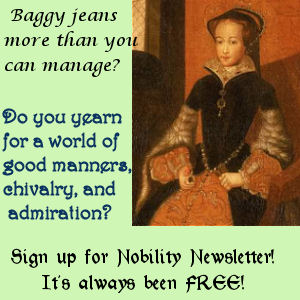CHAPTER 3
With the barbarian invasions, the population density of the cities diminished greatly and small towns became completely isolated. This isolated economy obliged them to become self-sufficient and take advantage of everything within their locality. It was direct subsistence without any external commerce.
In these conditions, each small community developed a unique character that developed its own architecture, its own dress, its own customs, and even its own language and dialects. By the 11th–12th centuries, Europe resembled a mosaic of tiny cultures that were small worlds unto themselves, each one bursting with life.
 Many of these regional variations yet survive. Indeed the principal attraction Europe exercises over tourists is the variety of regional dress, architecture, dance, music, and cuisine that are faint remnants of the varieties that proliferated in medieval times. Each region and town produced its own culture and civilisation that was distinct from the next, even if it were just a few leagues away.
Many of these regional variations yet survive. Indeed the principal attraction Europe exercises over tourists is the variety of regional dress, architecture, dance, music, and cuisine that are faint remnants of the varieties that proliferated in medieval times. Each region and town produced its own culture and civilisation that was distinct from the next, even if it were just a few leagues away.
It is not hard to see that this proliferation of exuberant cultures was a grassroots movement: these were small communities where individuals and families naturally communicated their vigour and influence in an ambience where public authority was limited. It was a time when the individual, the family, and custom directed life more than the constituted public authority.
Beginning in the 12th century this situation underwent a transformation, as feudal warfare diminished and Europe experienced relative peace. The knights-errant had cleared the thoroughfares of bandits and commerce had resumed. As the barriers between isolated communities disappeared, bigger towns were formed. Kings naturally emerged and constituted courts, and capitols began to appear in the various kingdoms. Everything began to tend toward centralisation.
This centralising trend continued to gather force until the 17th century and the beginning of the 18th century, with monarchs like Louis XIV of France and others a bit before and after him, such as Philip II of Spain and Peter the Great and Catherine of Russia. This concentration of authority upset the natural interplay of influences and was most noticeable in the court of Louis XIV.
It was the paradigm court. Its king, known as the Sun King, considered himself to be as kings should have been. He was surrounded by nobility who considered themselves to be the perfect model of courtly aristocracy. In fact, they were indeed imitated by aristocracies all over Europe. This court had statesmen Europe considered to be the most accomplished. It had great ladies who were the prototype of elegance, charm, and feminine beauty in that century. Even the Church participated in this movement, with ecclesiastics such as Jacques-Bénigne Bossuet, a bishop and theologian renowned for his sermons and other addresses. He was followed shortly thereafter by another bishop, Jean-Baptiste Massillon, both considered as model Church orators throughout Europe.
Thus, a new centre was formed upon which the whole of France—indeed all of Europe, to varying degrees—modelled itself. This presented a state of affairs diametrically opposite to what had existed heretofore.
Everywhere local influences disintegrated. Everywhere regional character gradually disappeared. They gave way to a new centre equipped with technocrats and specialists who were better at everything, from the art of conversation to the art of finances, from leading armies to directing the Church. Everyone imitated this new centre and the situation was entirely transformed.
Life as well as social movement no longer came from the grassroots upwards, but rather from the top downwards. It no longer came from the social body influencing those at the head of society, but it is now those at the head of society moulding the social body, which has now become a lifeless mass and allowing itself to be totally dominated.
Contrary to appearances, this centralisation did not cease with the French Revolution. Indeed the Committee of Public Safety exercised greater centralised authority and power than Louis XIV. Napoleon had even greater power than the Committee of Public Safety. Many French historians and legal experts agree that today’s French heads of state have much greater means to direct the social body than Louis XIV had at the height of his glory.
In this way, the interplay of influences had changed. With the transition from an aristocratic monarchy to democracy, the people were now king. In this directing centre, things had changed a bit. We now had what some sociologists have identified as a “doxocracy”: for each problem arising within society, a commission or quango—predominantly composed of specialists and technocrats—is established to find a solution, which is then spread, via the mass media, to influence the general public. Thus influenced, the electorate is free to choose; but the main impulse still emanates from the capitol.
The Christian Institution of the Family: A Dynamic Force to Regenerate Society, by Tradition, Family, Property Association. Pg. 26-30.










